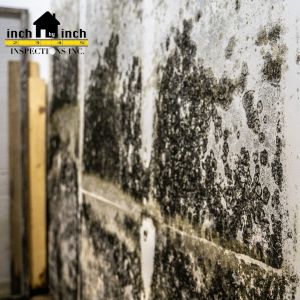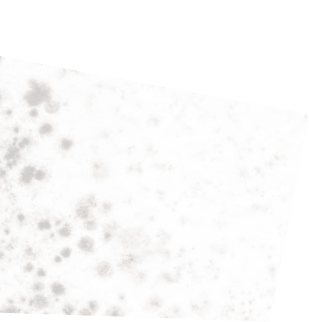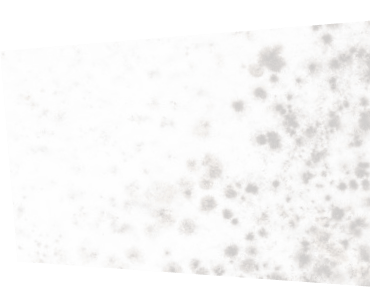Dealing with mold in your home is a challenging ordeal, requiring not only structural repair but also careful consideration of what to keep and what to discard after mold remediation in Mississauga. This crucial decision, as you sort through infested building materials and items significantly impacts the prevention of future mold growth and the overall health of your living space. For professional insight into what can be salvaged during mold removal services, contact the IICRC-certified specialists at Inch By Inch Inspections. Our certified and award-winning team will help you protect your building from the structural impact of mold as well as the harmful effects of poor indoor air quality.
For insight into what essential items can be retained versus what you should part with during mold remediation, read on. Here are some key factors you should consider.
Are There Structural Elements?
 Following successful mold remediation, a thorough evaluation of your home's structural components is essential. When materials like drywall and insulation may have absorbed moisture and fostered mold growth, you may have to discard them because mold infestations can compromise their functionality and reduce their strength. The team at Inch By Inch Inspections can assess the damage extent and determine if structural components can be saved through meticulous cleaning and treatment. Preserving these elements ensures the core integrity of your home remains intact and minimizes the costs and time associated with restoration.
Following successful mold remediation, a thorough evaluation of your home's structural components is essential. When materials like drywall and insulation may have absorbed moisture and fostered mold growth, you may have to discard them because mold infestations can compromise their functionality and reduce their strength. The team at Inch By Inch Inspections can assess the damage extent and determine if structural components can be saved through meticulous cleaning and treatment. Preserving these elements ensures the core integrity of your home remains intact and minimizes the costs and time associated with restoration.
Personal Belongings and Porous Materials
Deciding the fate of personal items is one of the most challenging aspects of mold remediation. While sentimental items hold considerable value, porous materials such as clothing and upholstered furniture can harbour mold. Assess each item individually, considering its material and contamination severity. Items that are challenging to clean or irreparably porous may need discarding to prevent mold recurrence. Seek professional cleaning and restoration services for salvageable items, ensuring thorough decontamination before reintroducing them into your living space.
Clothing and Textiles
Mold has a penchant for fabrics, making clothing and linens susceptible to contamination. Sorting through your wardrobe post-remediation demands a discerning eye. Washable fabrics can often be salvaged through thorough cleaning with mold-killing agents. Delicate or heavily contaminated items may need discarding. Consider material, sentimental value, and the effectiveness of cleaning methods when deciding what to keep and what to part with. Experts in air quality testing in Mississauga, Inch By Inch Inspections, can help you with this decision-making process. Protect your household's well-being by eliminating potential sources of mold growth in clothing and textiles.
Preventative Measures with Mold
Post-remediation, it's crucial to adopt preventative measures to sidestep future mold issues. Invest in proper ventilation, dehumidifiers, and regular inspections to monitor moisture levels. Consider using mold-resistant materials for replacements or renovations. Stay informed about mold growth indicators and act promptly if any issues arise with indoor air quality testing and mold remediation. These preventive measures not only secure a mold-free environment post-remediation but also fortify your home against potential future infestations.
Signs of Mold Contamination
Identifying mold contamination within indoor spaces requires a vigilant eye for specific telltale signs that you need mold removal. The most apparent indication often surfaces through smell—a musty, damp odor lingering in areas prone to moisture, like bathrooms, basements, or near leaky pipes. Visually, mold manifests in various forms—black spots, fuzzy white patches, or colored specks on walls, ceilings, or tucked-away corners. Any unexplained discoloration or irregular spots on surfaces should raise concern. Health-wise, allergic reactions such as nasal congestion, persistent coughing, skin irritation, or worsened asthma can point to prolonged exposure to indoor mold. Structural clues like peeling paint, warped walls, or discolored wallpaper might hint at underlying moisture issues, potentially leading to mold growth. The presence of these signs collectively raises an alarm for potential mold contamination. If you see them around your home or commercial property, contact the Inch By Inch Inspections team for restoration.
Building Materials Affected by Mold
Mold spores are often attracted to specific building materials. Infestations favour specific areas and materials because of their porous nature and ability to retain moisture.
Drywall, commonly used in construction, easily absorbs moisture, providing an ideal environment for mold to thrive. Similarly, ceiling tiles, insulation materials, carpeting, and wooden elements are susceptible due to their ability to trap moisture, facilitating mold growth. Even non-porous materials like concrete or metal can host mold on their surfaces if moisture accumulates. Moreover, organic materials like wood or paper-based products offer nutrients for mold, accelerating its colonization. Mold's adaptability to diverse surfaces and its tendency to flourish in moist environments make various building materials vulnerable to contamination.
The Risk of DIY Mold Removal
Opting for do-it-yourself (DIY) mold removal might seem like a cost-effective solution but carries significant risks. Without proper knowledge and equipment, DIY methods often fail to address the root cause of mold contamination. Incomplete removal may lead to regrowth, exacerbating the issue. Moreover, disturbing mold colonies during DIY removal can release spores into the air, causing further contamination and potentially escalating health risks for occupants. Improper handling of mold remediation may also result in accidental exposure to harmful chemicals present in some cleaning agents. In essence, DIY mold removal poses the danger of inadequate treatment, potential health hazards, and an increased probability of recurrent mold problems.
Protect Your Property & Belongings with Mold Remediation
Eliminating mold-contaminated materials isn't just about structural integrity; it significantly impacts health. Mold exposure can trigger respiratory issues, allergies, skin irritation, and, in severe cases, more profound health complications. Removing contaminated materials minimizes the risk of ongoing exposure to mold spores, reducing the potential for health problems. It also eliminates the source from which mold can proliferate, preventing its recurrence. By purging affected materials, you create a healthier indoor environment, lowering the chances of respiratory distress or allergic reactions caused by continued mold presence, prioritizing your and your family's well-being.
After mold remediation, striking the right balance between salvaging essentials and discarding irreparably contaminated items is crucial. The Inch By Inch Inspections team will evaluate structural elements, personal belongings, clothing, and textiles thoughtfully, so you can restore your property into the healthiest possible state by making informed decisions that contribute to a mold-free and safe living space.
For all your mold needs, trust the certified restoration experts at Inch By Inch Inspections.




